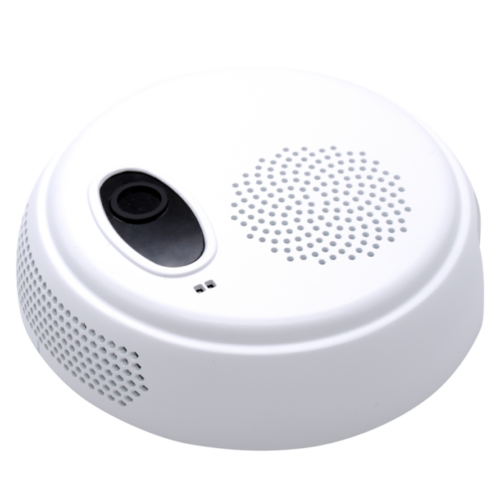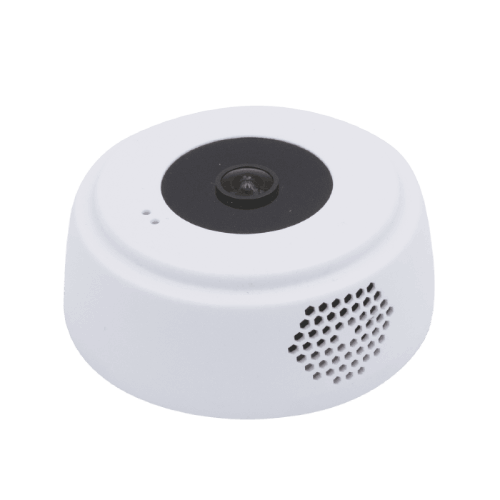This article is based on the webinar “An introduction to how People Counting technology can transform Smart Buildings”, hosted by Clément Peltrault, Product Manager for People Counting solutions and Frederic Tabus, Market Intelligence Manager at Tredecile.
Smart Buildings – Covid context and new trends
Covid has had a significant impact on the Smart Buildings industry. The pandemic has transformed the way that commercial buildings are used across the globe. With remote working and more recently, the introduction of hybrid working practices, building owners and managers are having to adapt their use of commercial office space.
As Frederic Tabus points out in the webinar, “Whilst energy consumption and expenditure have been high on the Smart Building agenda for some time, the economic pressures caused by the pandemic have expedited the need to reduce and control energy usage and related costs.
“For example, collectively, buildings in the EU are responsible for 40% of the region’s total energy consumption and 36% of greenhouse gas emissions (1). That makes buildings the single largest energy consumer in Europe.”
As a result, the EU has introduced ambitious policies to help steer member states towards better energy efficiency in buildings. Knowing that cost is often the major hurdle to renovation, the new rules also ease access to financing for improving building stock.
As part of the Clean energy for all Europeans package, the Energy Performance of Buildings Directive (EPBD) 2010/31/EU and the Energy Efficiency Directive (EED) 2012/27/EU were revised in 2018, to better reflect the EU’s aim of driving the clean energy transition by transforming 30 million buildings on the continent by 2030.
EU countries have been tasked with transposing the directive’s requirements into local laws and strategies. France for example voted in 2021 for €6.29B of funding to be allocated to the energy renovation of buildings.
Saving energy the smart way
Smart Buildings play a crucial role in meeting EU directives to reduce energy consumption.
“By automating controls and optimizing internal systems from heating and ventilation to lighting and the consumption of all electrical devices, Smart Buildings can realize significant energy savings,” says Frederic Tabus.
“Ongoing energy performance improvements can be realized through continuous monitoring and auditing of energy levels, in combination with an understanding of the factors influencing energy consumption – such as the building’s occupancy levels.”

The increasing scope of Smart Buildings
Frederic Tabus continues, “With the right technology solutions, Smart Buildings can achieve so much more. Smart Buildings have the potential to deliver a gamut of services that benefit building owners, managers and occupants alike.”
A Smart Building’s design must focus on the end user or occupant, to deliver a secure and comfortable place to work, live or relax. Providing access to services that improve lifestyle and well-being such as electric car charging points, childcare, laundry services, fitness and leisure facilities, will become increasingly important over the next five to ten years.”
Put simply, Smart Buildings have the capacity to make day-to-day life easier and better for occupants, improving productivity and general well-being. Meaningful data on building occupancy and usage is critical to these services, and that requires accurate people counting data and analytics.
Get even smarter with data insights from people counting sensors
With an increasing number of employers introducing hybrid working policies, the ability to measure building occupancy and flow has never been more important.
As Frederic Tabus comments, “Employers need the tools to understand occupancy on any given day and be able to book workspaces, desks and meeting rooms.
“At the same time, facilities managers need to rationalize and reorganize space within the building according to occupancy levels, to reduce space and associated costs when and where appropriate.
Frederic Tabus adds, “Other building services can benefit from an accurate understanding of occupancy levels. Take security, cleaning and catering services, for example. They each need to understand how many people are in the building at any given time and which spaces they are in. This requires solid data and analytics.
“A successful people counting solution must benefit all parties involved – from employees to building owners, managers and affiliated services. It must be easy to install, configure and maintain. And it must also be reliable, secure and guarantee the privacy of occupants.”
People Counting solutions
How people counting works
To illustrate how people counting works, we use the example of an office space with two entrances that people can walk in and out of. People counting devices are installed over the two entrances and the sensor counts people when they enter and exit.
Clement Peltrault comments, “Our devices send the people counting data through MQTT or HTTP to a web server, a broker or a cloud platform, which hosts a database.
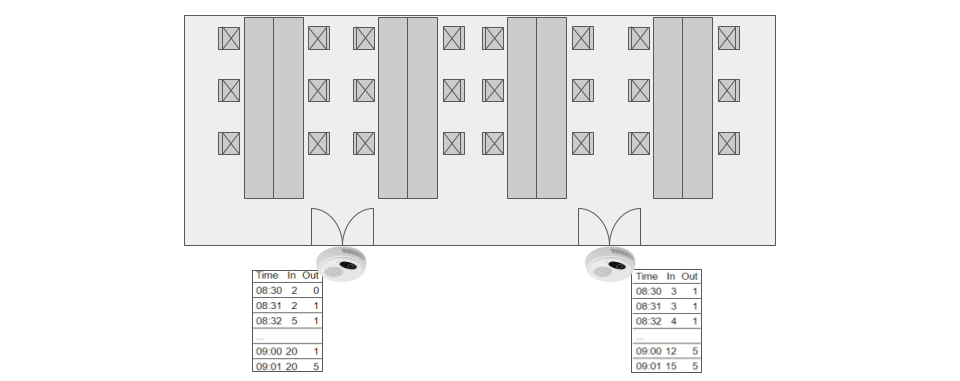
Source: Tredecile
Data integration to visualize people flow and room occupancy over time
“The database aggregates and computes all the counts to understand the occupancy within the space. With the available metrics it’s then possible to create a visualization of the space to study occupancy and traffic flow.
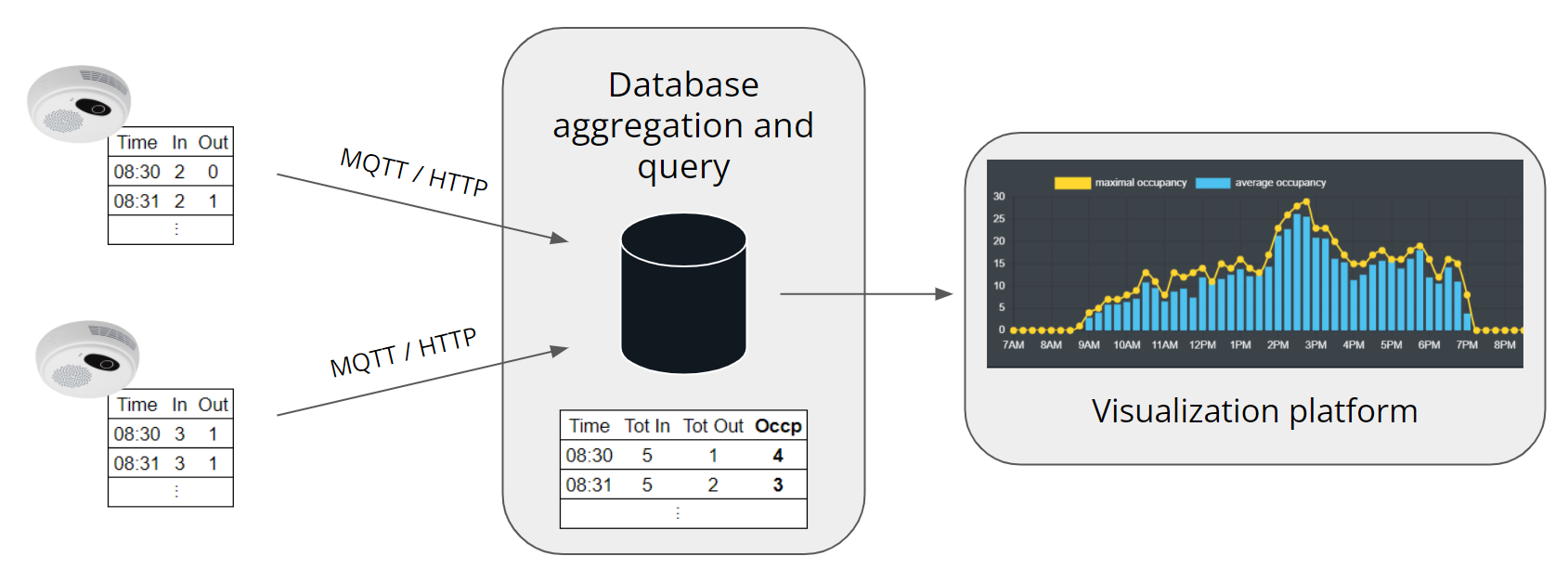
Source: Tredecile
Data integration to trigger Smart Building controllers
Clément Peltrault adds, “The system can also be connected to a Building Management System (BMS) or any other system software (such as a meeting room booking system) that would benefit from alerts being triggered depending on the number of people within the space.
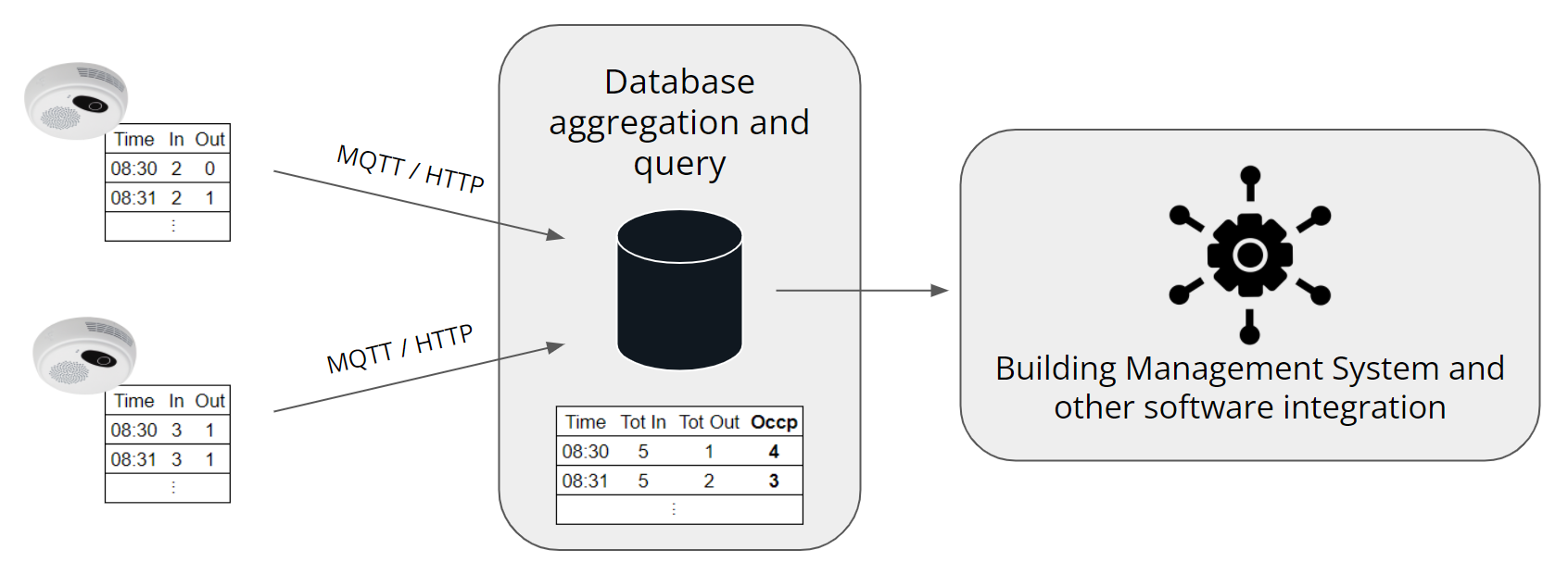
Source: Tredecile
Real-time occupancy for HVAC optimization
“For example, the building’s HVAC system can be controlled in relation to occupancy levels. This makes it very reactive and reduces cost and CO2 emissions, heating and air conditioning are only used when and where they are needed. This also ensures the comfort of occupants within the space.”
Room booking systems, catering and cleaning systems can all be connected to ensure the seamless delivery of services based on accurate, real-time numbers relating to traffic and occupancy.

A practical example
Tredecile has been working with Feedback Solutions in Canada. Feedback Solutions wanted a cost effective people counting solution to integrate with its air quality sensors.
“Raw data from Feedback Solutions’ air quality sensors and our people counting sensors is sent via an IP edge device through the BACnet IP protocol to the building management system. This triggers and controls the building’s HVAC system and automates the ventilation of the building, to reduce energy expenditure and greenhouse gas emissions, “ says Clement Peltrault.
As a result, Feedback Solutions has been able to fully automate the ventilation of a building and are rolling the solution out. The graphic below demonstrates that, thanks to Tredecile’s People Counting sensors, they can see that peak occupancy, when 100% of ventilation should be applied, is at 2pm and therefore the building is expending energy unnecessarily.
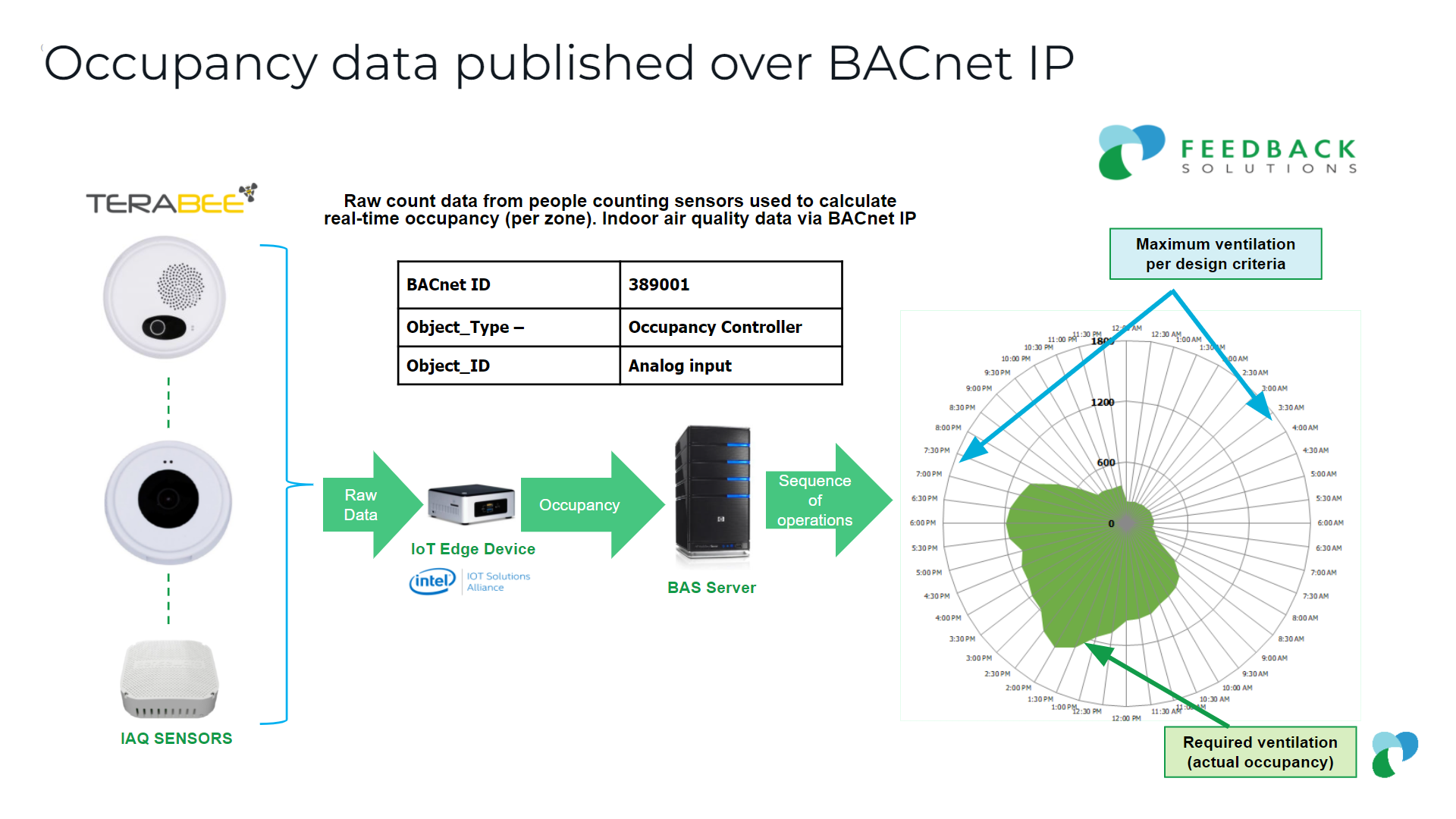
Source: Feedback Solutions
Tredecile’s People Counting products
Tredecile People Counting L-XL can count multiple people passing bi-directionally through wide doorways and corridors. It can be deployed as a single unit or combined with multiple units. People Counting L-XL offers 98% accuracy.
Tredecile People counting M, with a 90 centimeters wide field of view, is suitable for conventional doors or narrow passageways. It can count people passing one at a time, in either direction, and offers 95% accuracy.
Both devices are easy to install and require no additional setup. They both protect the privacy of occupants and are therefore fully GDPR compliant.







